50+ Sample Advertising Contracts
-
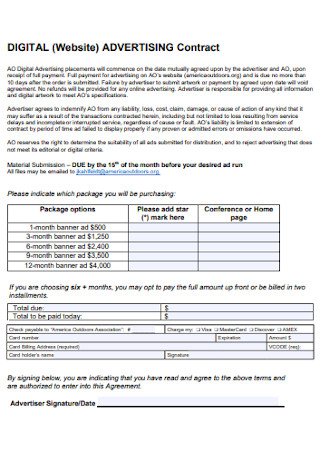
Digital Advertising Contract
download now -
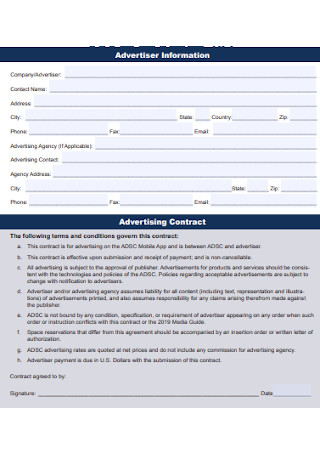
Mobile Advertising Contract
download now -
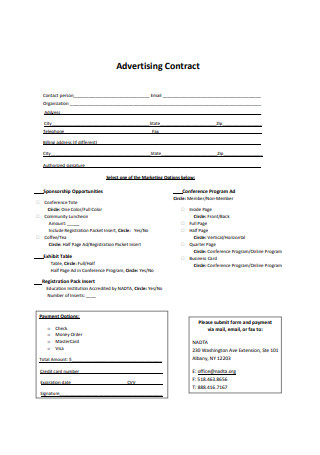
Advertising Marketing Contract
download now -
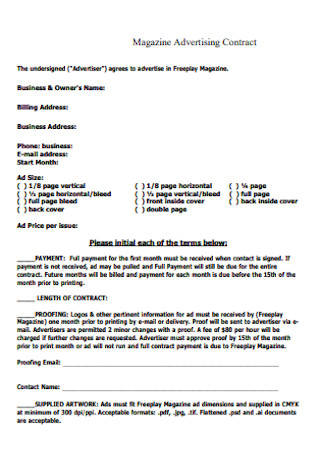
Magazine Advertising Contract
download now -
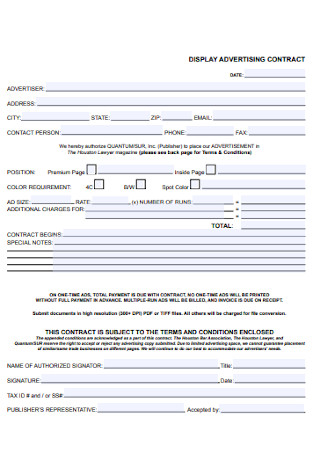
Display Advertising Contract
download now -
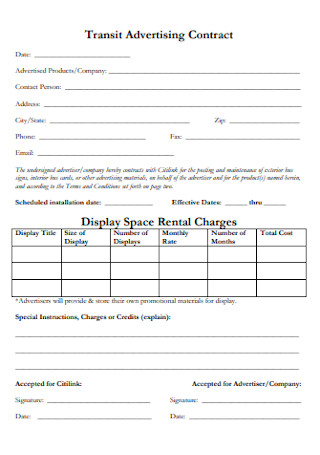
Transit Advertising Contract
download now -

Magazine Advertising Contract
download now -
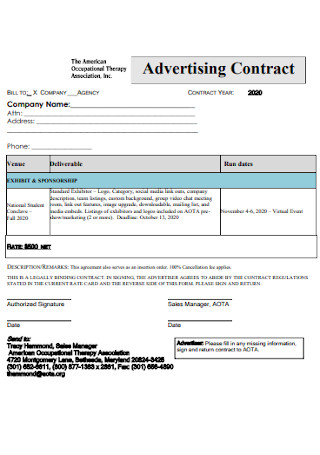
Company Advertising Contract
download now -
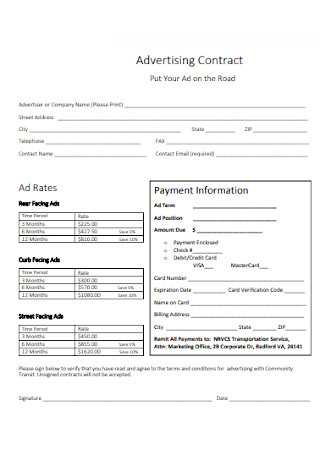
Advertising Payment Contract
download now -
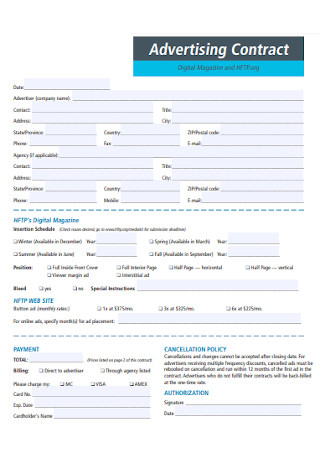
Advertising Contract Format
download now -

Website Advertising Contract
download now -
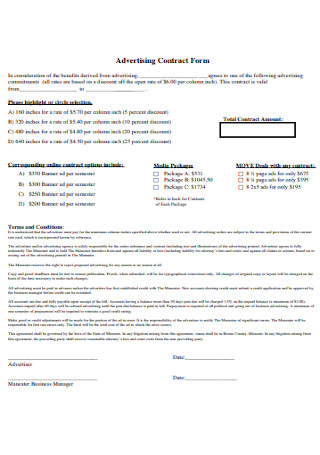
Advertising Contract Form
download now -
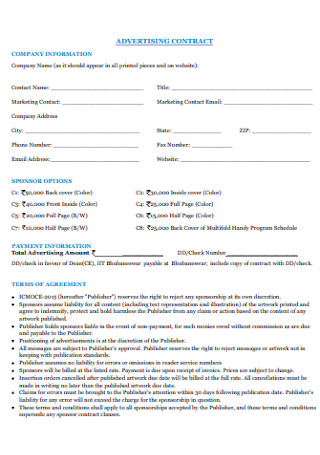
Simple Advertising Contract
download now -
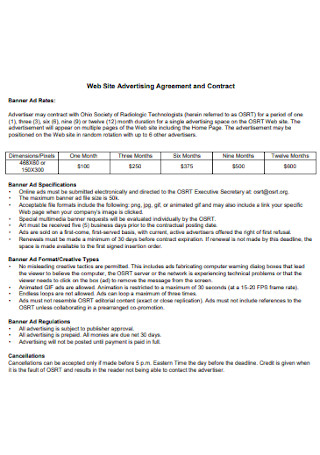
Web Site Advertising Agreement and Contract
download now -
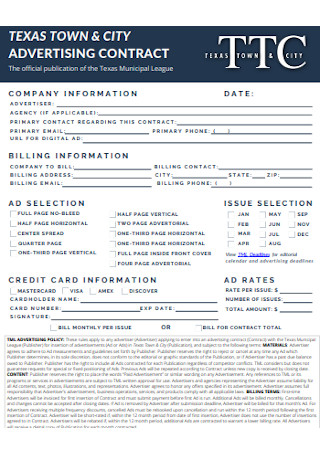
City Advertising Contract
download now -
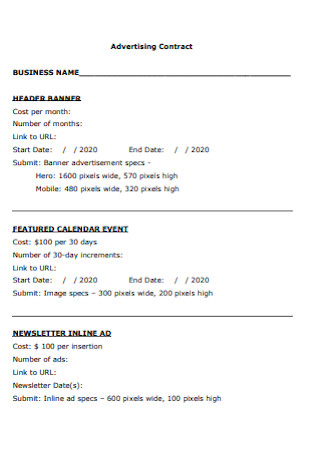
Tourism Advertising Contract
download now -

Sponsorship and Advertising Contract
download now -
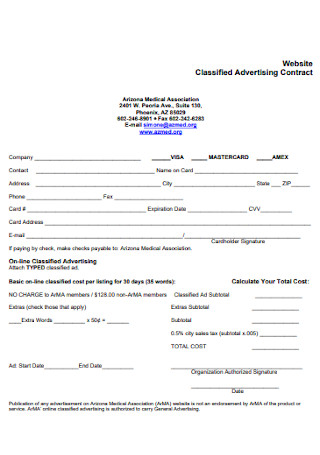
Classified Advertising Contract
download now -
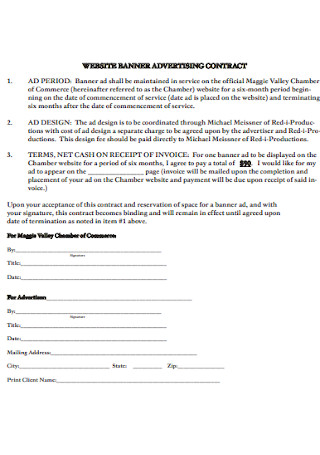
Website Banner Advertising Contract
download now -
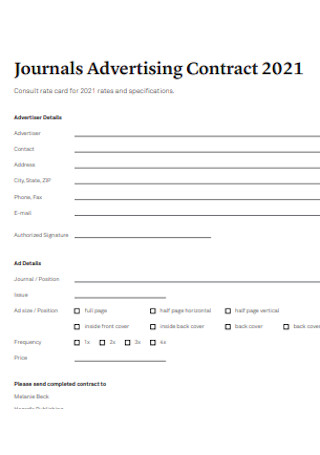
Journals Advertising Contract
download now -
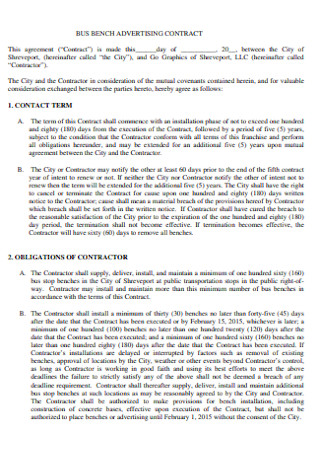
Bus Benz Advertising Contract
download now -
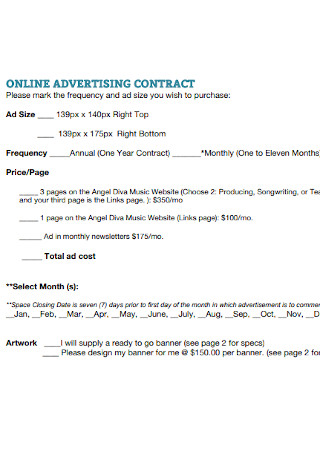
Online Advertising Contract
download now -
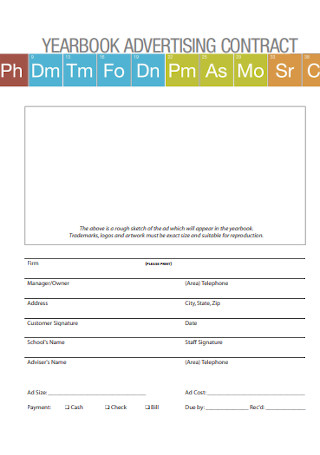
Yearbook Advertising Contract
download now -
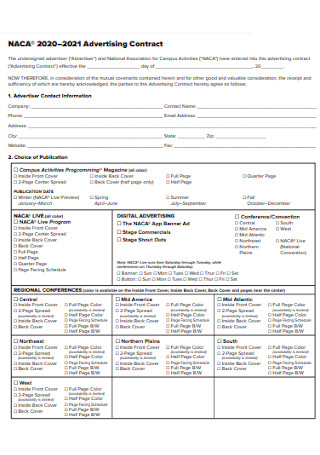
Standard Advertising Contract
download now -
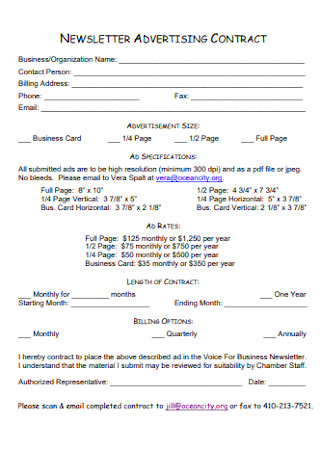
Newsletter Advertising Contract
download now -
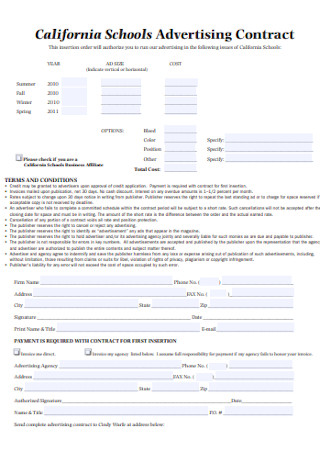
Schools Advertising Contract
download now -
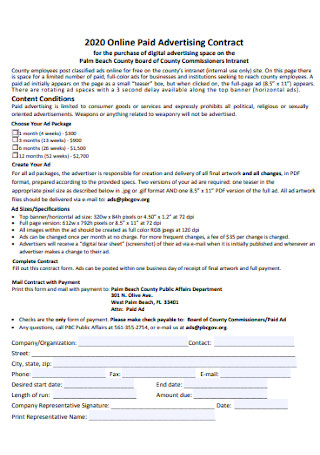
Online Paid Advertising Contract
download now -
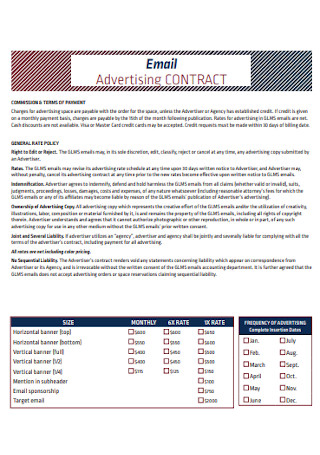
Email Advertising Contract
download now -
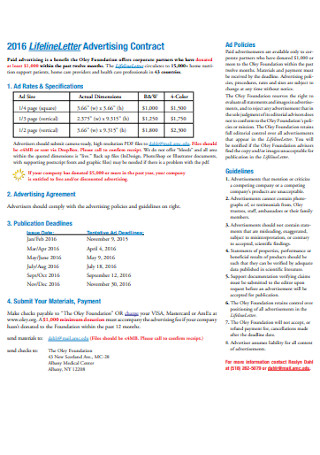
LifelineLetter Advertising Contract
download now -
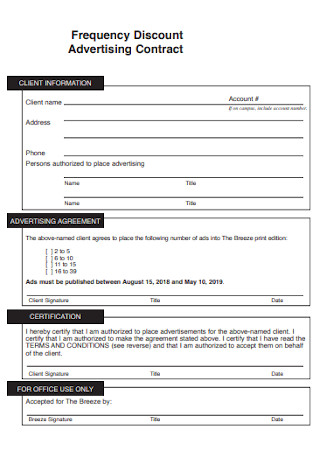
Frequency Discount Advertising Contract
download now -
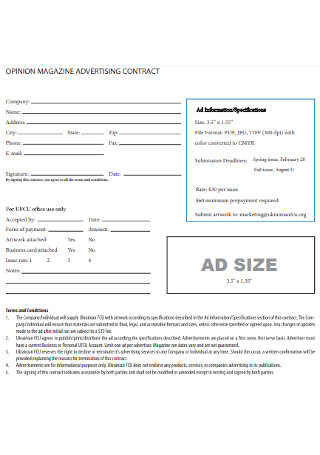
Opinion Magazine Advertising Contract
download now -
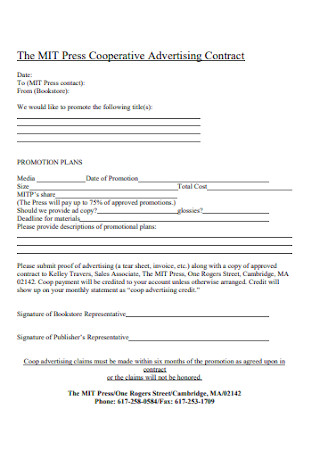
Cooperative Advertising Contract
download now -
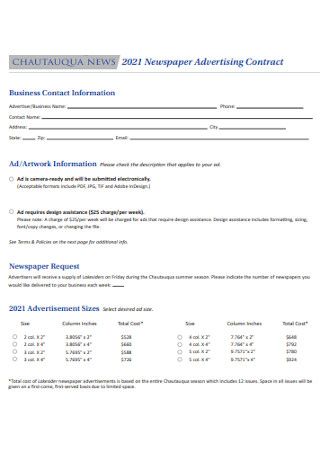
Newspaper Advertising Contract
download now -
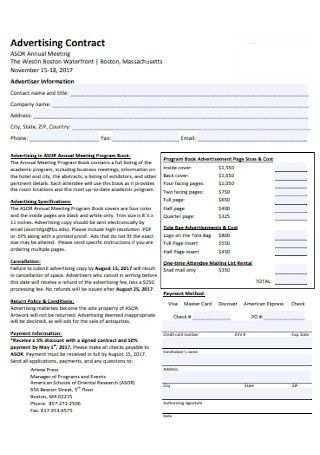
Meeting Advertising Contract
download now -
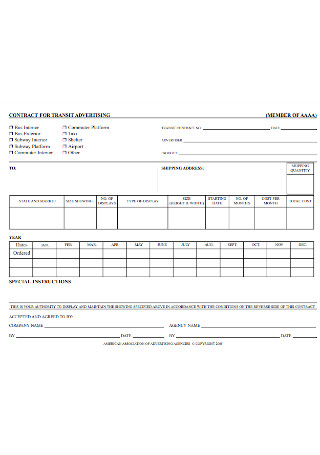
Contract for Transant Advertising
download now -
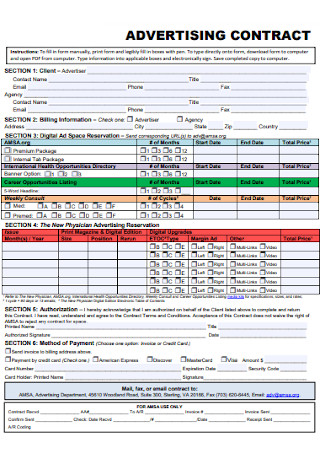
Student Advertising Contract
download now -

Digital Advertising Contract Format
download now -
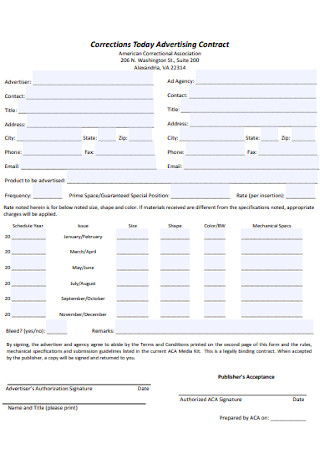
Corrections Today Advertising Contract
download now -
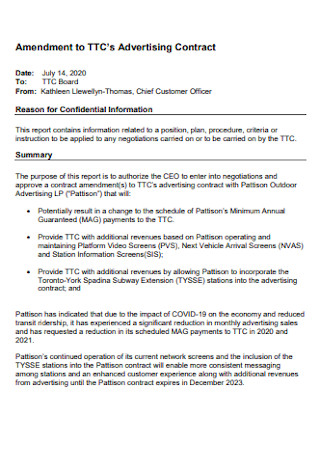
Amendment to Advertising Contract
download now -

Program Advertising Contract
download now -

Sample Online Advertising Contract
download now -
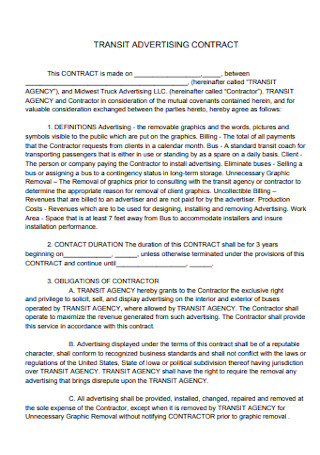
Transit Advertising Contract Template
download now -
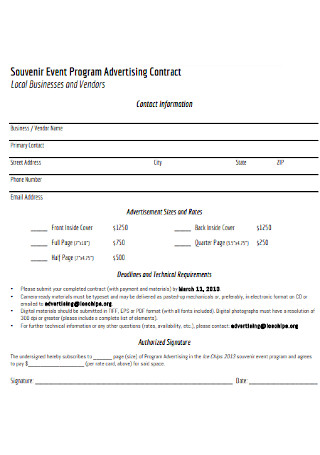
Event Program Advertising Contract
download now -
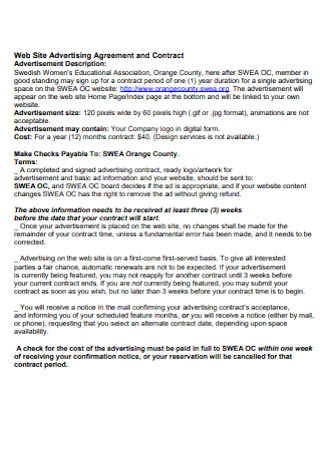
Web Site Advertising and Contract
download now -
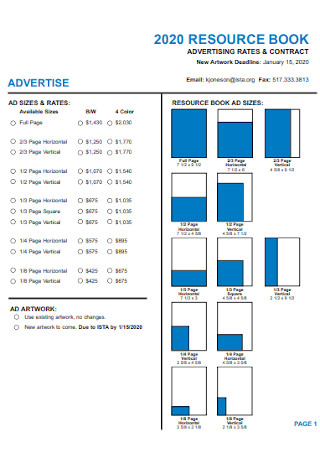
Adertising Rates and Contract
download now -
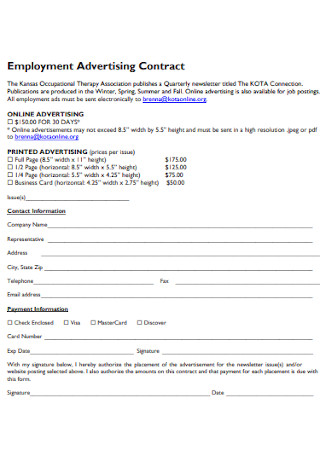
Employment Advertising Contract
download now -
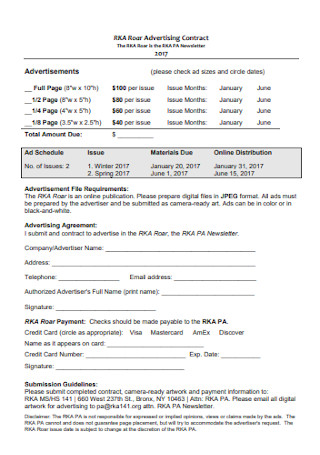
Sample Roar Advertising Contract
download now -
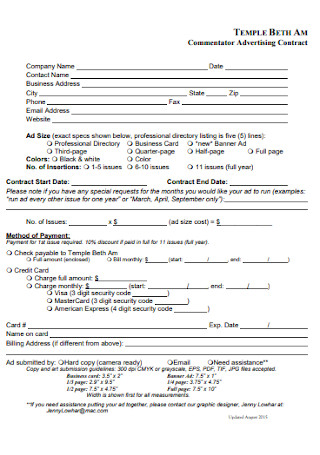
Commentator Advertising Contract
download now -
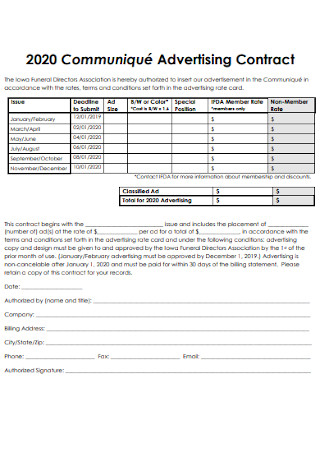
Communiqué Advertising Contract
download now -

Advertising Space Contract
download now
FREE Advertising Contract s to Download
50+ Sample Advertising Contracts
What Is an Advertising Contract?
Elements of an Advertising Contract
How to Create an Advertising Contract
FAQs
What is the importance of advertising in a business?
What are the ways to promote products and services?
How much does a company need to spend on advertising campaigns?
Through advertising in phone apps and social media, they market their products and services to people from different parts of the world. In using this strategy, companies create ties with people in the advertising world to create a campaign. In their partnership, an advertising contract comes to light. It is essential to know the definition of an advertising contract, its parts, and the process of creation as a business. Learn more about advertising contracts from the article below.
What Is an Advertising Contract?
An advertising contract is a written agreement between two parties, with one party producing either goods, services, or both, while the other provides the space, time, or location to promote the goods or services rendered by the other party. The party that advertises the product is usually a publication, broadcast, or a social media conglomerate. These organizations are the ones who market the service or product, often called an advertiser. The company seeking an advertiser’s help remunerates the service based on the length and size of the advertisement. The advertiser also receives product launch samples or service discounts depending on the agreed-upon terms.
According to the data gathered by the Statista team and published in September 2020 entitled Advertising spending in the world’s largest ad markets 2019, United States remains to be the leading global market in terms of advertisement spending. Nearly 243.3 billion US dollars worth of investments utilized by the country for promotional activities in 2019 alone. It means that companies still promote their products and services to individuals despite the impact of the pandemic.
Elements of an Advertising Contract
Each advertiser creates their contract according to the services and products they offer and the agreed-upon terms and conditions with the other party. In this sense, there is no one format in creating an advertising contract. However, certain parts must be present to have a clear understanding of the agreement. Below are the main elements evident in an advertising contract.
How to Create an Advertising Contract
It is necessary to have a well-structured contract to ensure the security of both parties. The recommended elements stated above depends on the agreed terms between the client and the advertiser. Ensure there is a clear understanding of the conditions that will reflect in the contract. Here is a step-by-step guide that helps in creating an advertising contract.
Step 1: Identify the Contract Basics
All legal contracts provide information about the client and the advertiser, including the organization’s name, contact information, and location address. Like all contracts, the job offer and acceptance, legal purpose, considerations, capable parties, and mutual consent must reflect in the agreement. As it is an advertising contract, the purpose of the contract is to provide advertising services and products to the client, and it must show. The contract must also detail payment terms and schedules to ensure that the services are well-compensated according to the arrangement by both parties. At the end of the agreement, both parties must sign to close the deal.
Step 2: Highlight the Advertisement Specifics
The contract lists all the specific services the advertiser provides in the duration of the contract. The services incorporated are based on the agreed terms of the two parties, and the examples include print, television, radio, social media, or mixed media. A well-constructed contract stipulates the date, duration, and location of the advertisement. It is also advisable to add a clause that addresses how the client issues approval and review of the advertising campaign created by the advertiser.
Step 3: Emphasize the Necessary Clauses
Ensure the agreement contains a sense of exclusivity and include the rights each party has concerning the advertising contract. It is necessary to detail the length of the advertising campaign, the start and end dates, the accurate compensation details, and clauses that describe how both parties will act if there are unforeseen circumstances and urgent actions to be taken. The parties should consider inserting termination, indemnification, and confidentiality statements in the contract. Having these clauses intact reassures both client and advertiser about the counter arrangements made if there are lapses during the term of the agreement and saves them from any legal actions.
Step 4: Add Several Incentives for the Contract
As an advertiser, it helps when a client discusses incentives in the advertising contract. Incentives, in this case, can refer to an increase or bonus payment, client referrals, or repeat contracts in the future. It serves as a reward for reaching quantifiable goals, including an increase in sales or services, social media followers, client list, company reliability, and brand presence. The incentives are visible on the payment terms and schedule of the contract.
FAQs
What is the importance of advertising in a business?
Advertising is one of the most vital aspects of any business, and it is the way for the company to connect and communicate with the consumers. If the consumers can relate to the advertising campaign the market promotes, they will likely frequent and patron products and services. The sole purpose of companies is to generate revenue by selling products and services. Advertising helps consumers decide on the products and services to purchase. Through advertising, consumers assure themselves that they get the best possible options. The advertising industry became an integral part of businesses worldwide, and as a result, brought about plenty of competition between agencies. Companies and organizations also aim to promote their products and services in the best possible ways, and advertising campaigns found modern solutions and techniques to market businesses. Due to the demand, many advertising agencies and firms rose. Each promotional campaign has one goal; the products and services reach the right people by increasing awareness, highlighting benefits, and listing drawbacks.
What are the ways to promote products and services?
The main goal of marketing is to promote the products and services for the company to gain revenue. Understanding the ways to boost your market considerably impacts your business. Here is a list of ways products and services find their way into advertisements. One way is through print and visual media. Included in this category are promotional brochures, posters, packaging, business cards, newspaper advertising, and magazines. Brochures provide detailed information about your products and services; meanwhile, business cards support networking activities and provide contact information about the organization. Newspaper advertising is a valuable way to market the business locally, and magazines are the perfect medium to target specific audiences. Another way to promote products and services is through electronic media. The most common forms of this type include radio, television, internet service, and social media platforms. Television reaches the most number of people and targets in-home audiences. Radio is the most cost-effective and utilizes frequent listeners. The internet, in general, offers a wide range and variety of product or service marketing. Social media is the most popular at present and reaches people more casually and interactively. Other forms of advertising include promotional gifts given during events to promote brand presence and through networking and community development, wherein representatives from a company participate in trade shows, conferences, and other social events.
How much does a company need to spend on advertising campaigns?
It is essential to consider the budget for an advertising campaign based on the budget allocated beforehand and how effectively it translates the company’s objectives. It is also advisable to learn about your competitor’s advertising campaigns and adjust spending power accordingly. The company must also consider how far the achievement of the goals with the company’s set objectives for the product or service. If the company releases a new product, it means there’s a bigger chance the company spends more. Also, estimate what advertising brings to the company. Calculate the sales related to advertising the product and if it will affect the company positively or negatively. The best way to handle and regulate costs is through online advertising because it undergoes testing and revising as you continue with the campaign. It also helps to measure the results of online advertisements to refine outcomes of brand positivity and improve the return of investment. It is vital to keep these in mind when computing and allocating costs for advertising campaigns to ensure the company is getting value for its money. Guarantee that the company also hires the right people and utilizes the best campaign strategies to promote the product or services effectively.
There isn’t a day when people do not encounter a form of advertising in any way. Advertisements have been a part of everyday life and activities that we don’t recognize that it is already the company’s way of enticing consumers to avail of products and services. Remember that an advertiser and a client must work together to attract customers in the best possible manner. Accurate research is the key to knowing what consumer trends work best with the product or service the company offers. In the famous words of Howard Luck Gossage, “Nobody reads ads. People read what interests them, and sometimes it’s an ad.” It is essential to make ads interesting enough that people recognize what it is the company is selling. Check out the advertising contract samples above and start marketing your company’s products or services.
